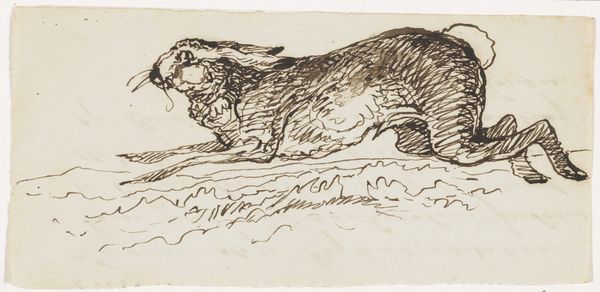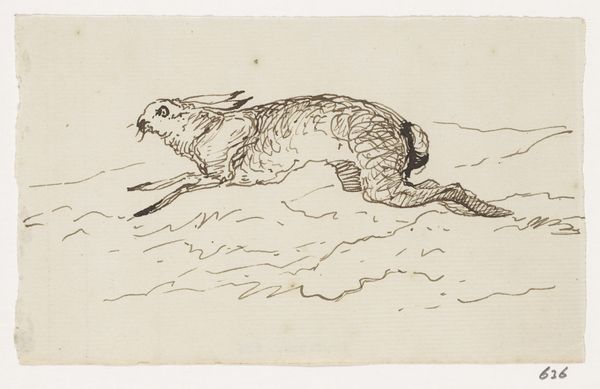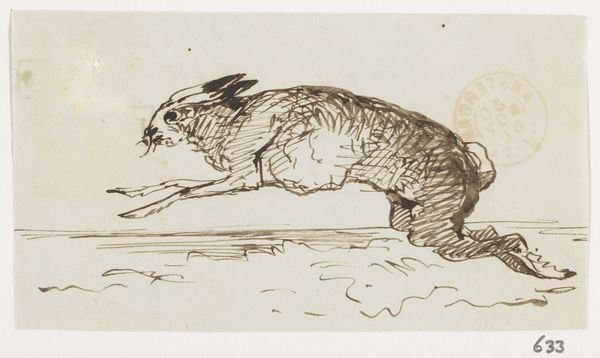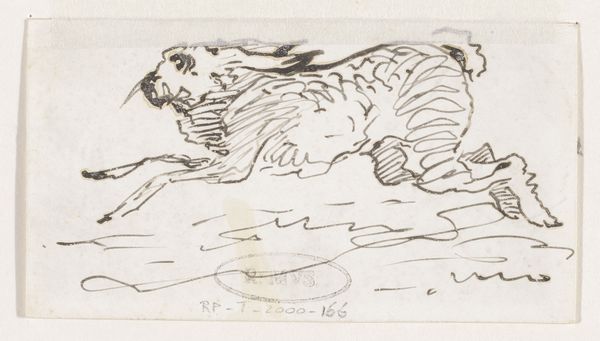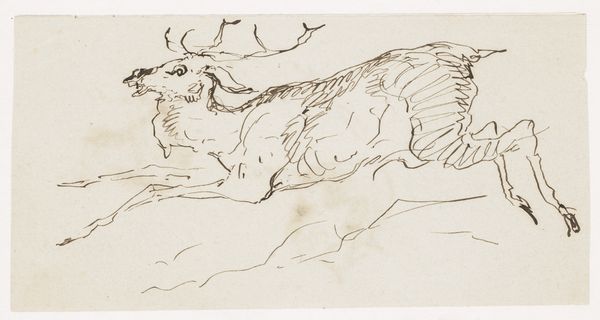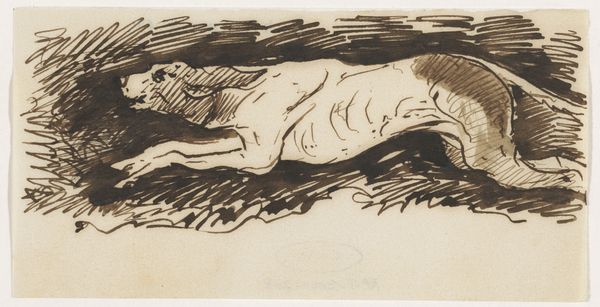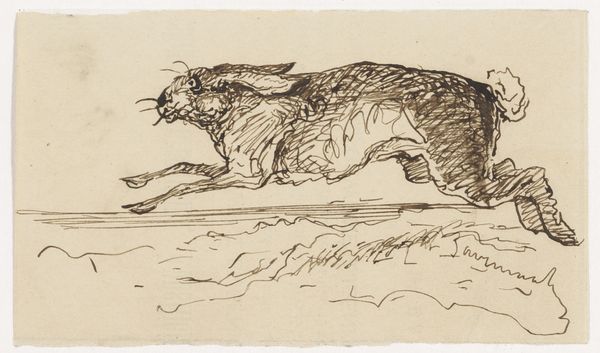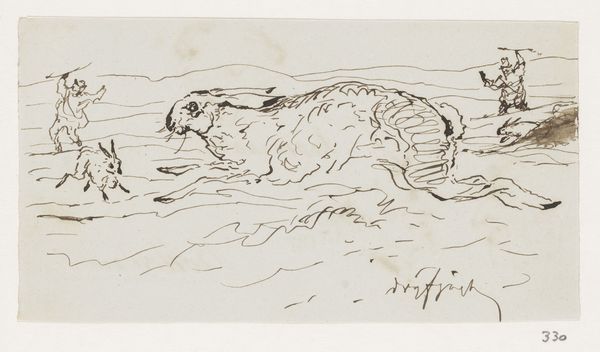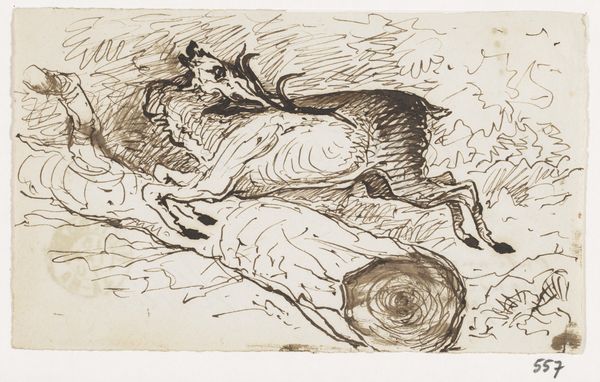
drawing, paper, ink
#
drawing
#
ink drawing
#
animal
#
figuration
#
paper
#
ink
#
realism
Dimensions: height 40 mm, width 123 mm
Copyright: Rijks Museum: Open Domain
Editor: This is "Haas," a drawing in ink on paper by Johannes Tavenraat, dating from between 1840 and 1880, housed here at the Rijksmuseum. It's… kind of frantic, I think. All those sketchy lines, the way the animal is stretched out. What do you see in it? Curator: Immediately, I see the hare as a potent symbol across cultures – a liminal creature, associated with the moon, with cycles of death and rebirth. Consider its posture; the animal isn’t merely running, it's propelled, almost fleeing. Does that frantic quality evoke a sense of vulnerability to you? Editor: Yes, definitely. There's no real background; it’s isolated. It makes it seem very exposed, as if the hare is in danger, vulnerable and small against something vast. Curator: Precisely. Consider also that the hare, historically, is connected to fertility and abundance, but simultaneously, is often a sacrificial offering. Do you see any conflict between those readings when you examine the drawing? Editor: I do now! I mean, the rapid strokes suggest a vibrant energy, almost too much energy, which clashes with the kind of… desperation of the pose. Is Tavenraat commenting on something specific, or is it more about capturing an emotion? Curator: I believe he captures a paradox central to the animal itself, reflecting humanity's complex relationship with the natural world and the symbols we impose upon it. We project so much meaning onto such creatures. And how do *they* read *us*, I wonder? Editor: That's a fascinating question to consider when looking at any image. I came in seeing a frightened hare and now I see layers of symbolism! Thanks! Curator: And I now appreciate more clearly the hare’s capacity for carrying symbolic weight, even in something as fleeting as a sketch.
Comments
No comments
Be the first to comment and join the conversation on the ultimate creative platform.
